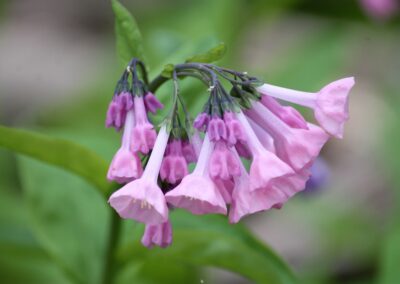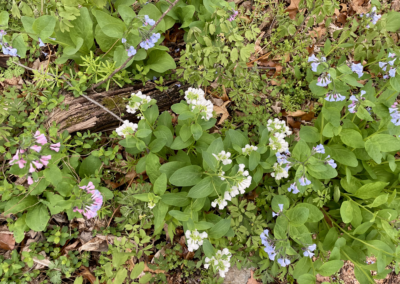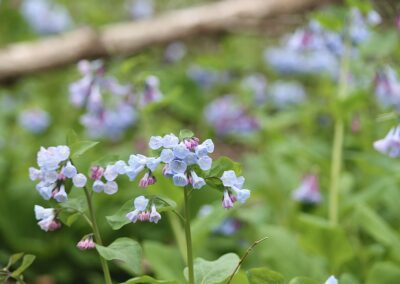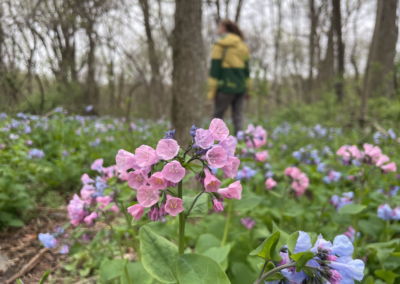Treasures of Spring
Spring is here and the first few weeks boast some of the most unique blooms in Pennsylvania! As the April showers begin, the forest floor is awake with wildflowers while the trees are just beginning to bud. Plants that bloom in the springtime before the trees have produced their leaves are called ephemerals. Typically, these plants will flower for just a couple of weeks in the early spring. They complete their life cycle incredibly quickly, emerging, flowering, and seeding in just a few weeks time. After seeding, the plant dies back and goes dormant for the rest of the year.
The window to find ephemerals can be quite short between the winter’s last frost and the surrounding trees leafing out! These plants are a vibrant sign of spring amongst the winterscape. So, the Feather and Fern team trekked out to find these special plants in the wild.

Virginia Bluebells
A favorite among plant enthusiasts is the beautiful Virginia bluebells (Mertensia virginica). Bluebells have lush, green leaves and blossoms in shades of blue. Their stalks grow tall above groundcover plants and create a sea of cheerful blooms in the early spring forest. This year, we found an abundance of the classic blue-colored bluebells, as well pink and white blossoms. These color variations were amazing, especially at Ferncliff Wildlife and Wildflower Preserve! We were in awe of all the Virginia bluebells, as evidenced by the sheer number of photos we took!
Virginia bluebells are an early source of nectar for pollinators in the spring. Since their flower has a tubular shape, long-tongued bees, like bumblebees, are common pollinators. If you’re lucky, a ruby-throated hummingbird may even stop by to take advantage of the flowers.1 The best part about Virginia bluebells? They look great in your garden! Bluebells can be planted in partial to full shade areas of your property where the soil is moist. Every spring you can enjoy these iconic blooms!
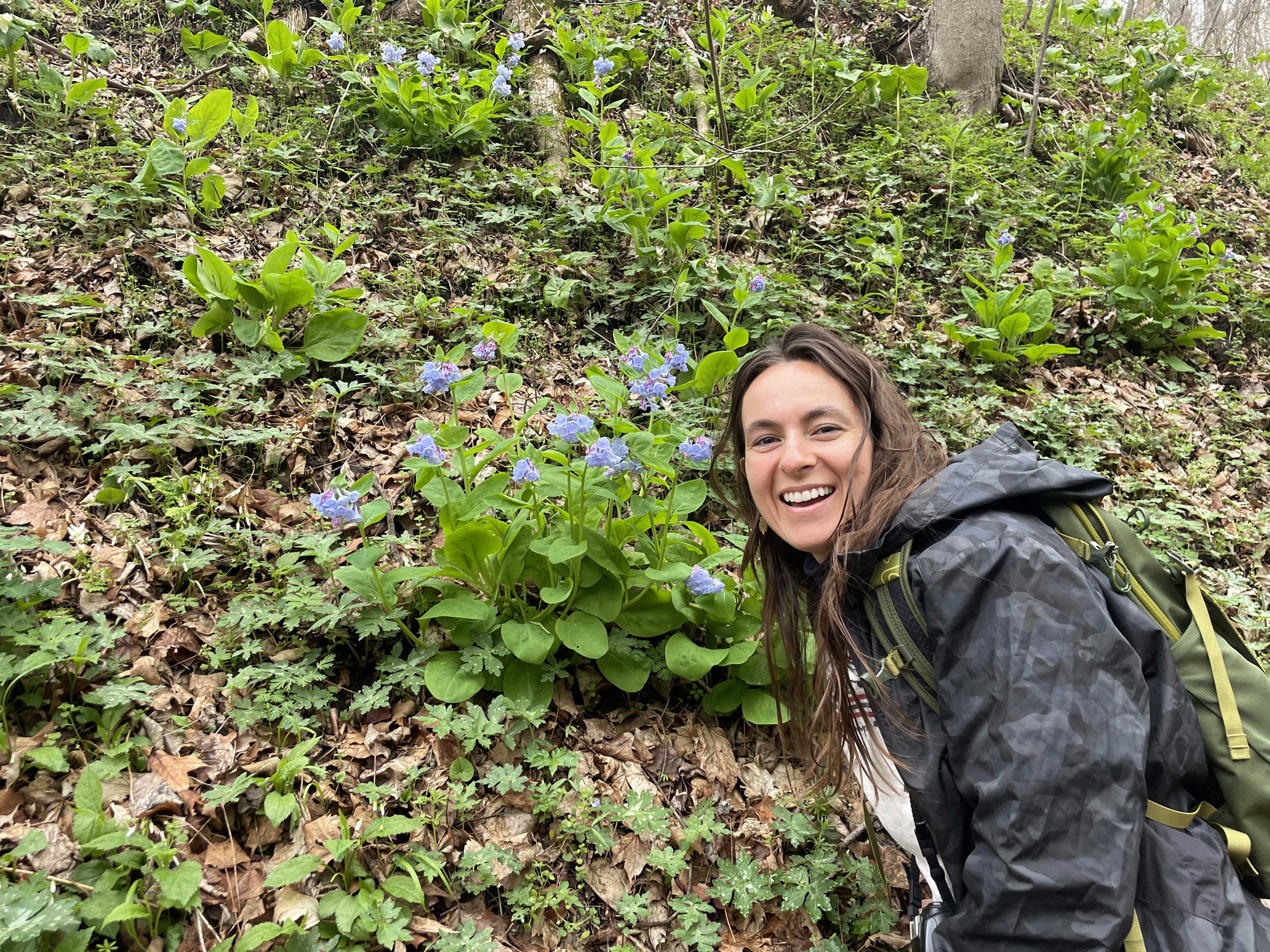

Trilliums
This spring, trillium was a thrilling find! During our adventures, we found three species of trillium in the local area (Trillium flexipes, Trillium erectum, Trillium grandiflorum). Part of what is so enchanting about finding Trillium is that it takes years for these species to reach the flowering stage. From seed, a Trillium plant may take two to three years to produce the familiar leafy structures. Then, around the seventh year, a plant will finally produce a flower.2 Every bloom we see is a testament to the perseverance of this plant!
The word trillium contains the prefix ‘tri’ which derives from the Latin word ‘trilix’ and means triple.2 This name is noteworthy as trillium plants all have three leaves, three petals, and three sepals. Occasionally, you may be able to find an oddball plant with a mutation that makes it grow four of everything! On one of our hikes, Shelby spotted a trillium with four leaves, petals, and sepals right next to the trail. This was a rare treat for us to observe!
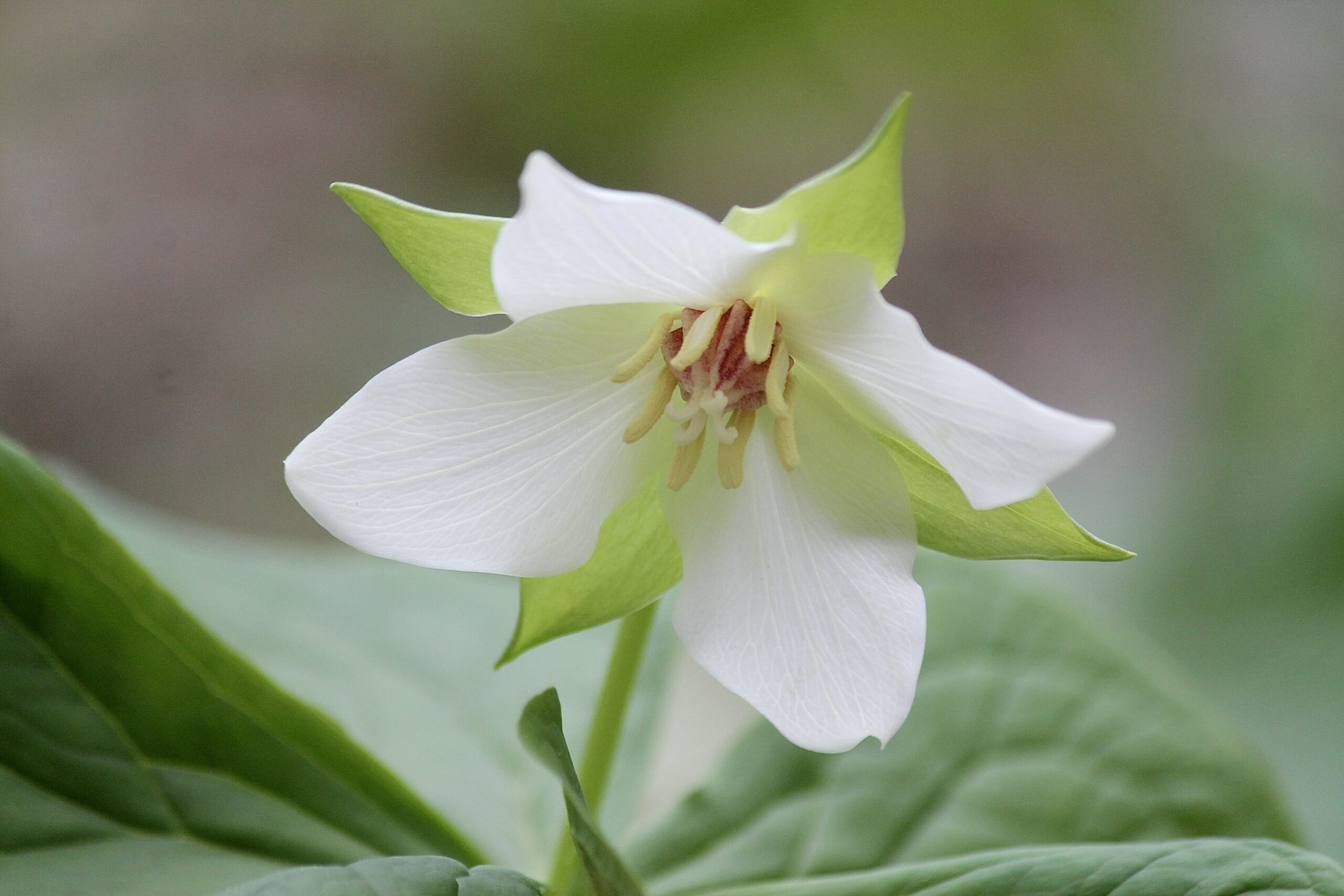
The word trillium contains the prefix ‘tri’ which derives from the Latin word ‘trilix’ and means triple.2 This name is noteworthy as trillium plants all have three leaves, three petals, and three sepals. Occasionally, you may be able to find an oddball plant with a mutation that makes it grow four of everything! On one of our hikes, Shelby spotted a trillium with four leaves, petals, and sepals right next to the trail. This was a rare treat for us to observe!

Trilliums have a unique relationship that aides in their seed dispersal. Their seeds develop with an extra piece called an elaiosome. Ants are particularly attracted to the elaiosome structure because it is rich in nutrients. They harvest the seed from the Trillium plant, feast on the elaiosome, and then discard the seed. Where that seed is discarded is where a new Trillium plant will grow!3
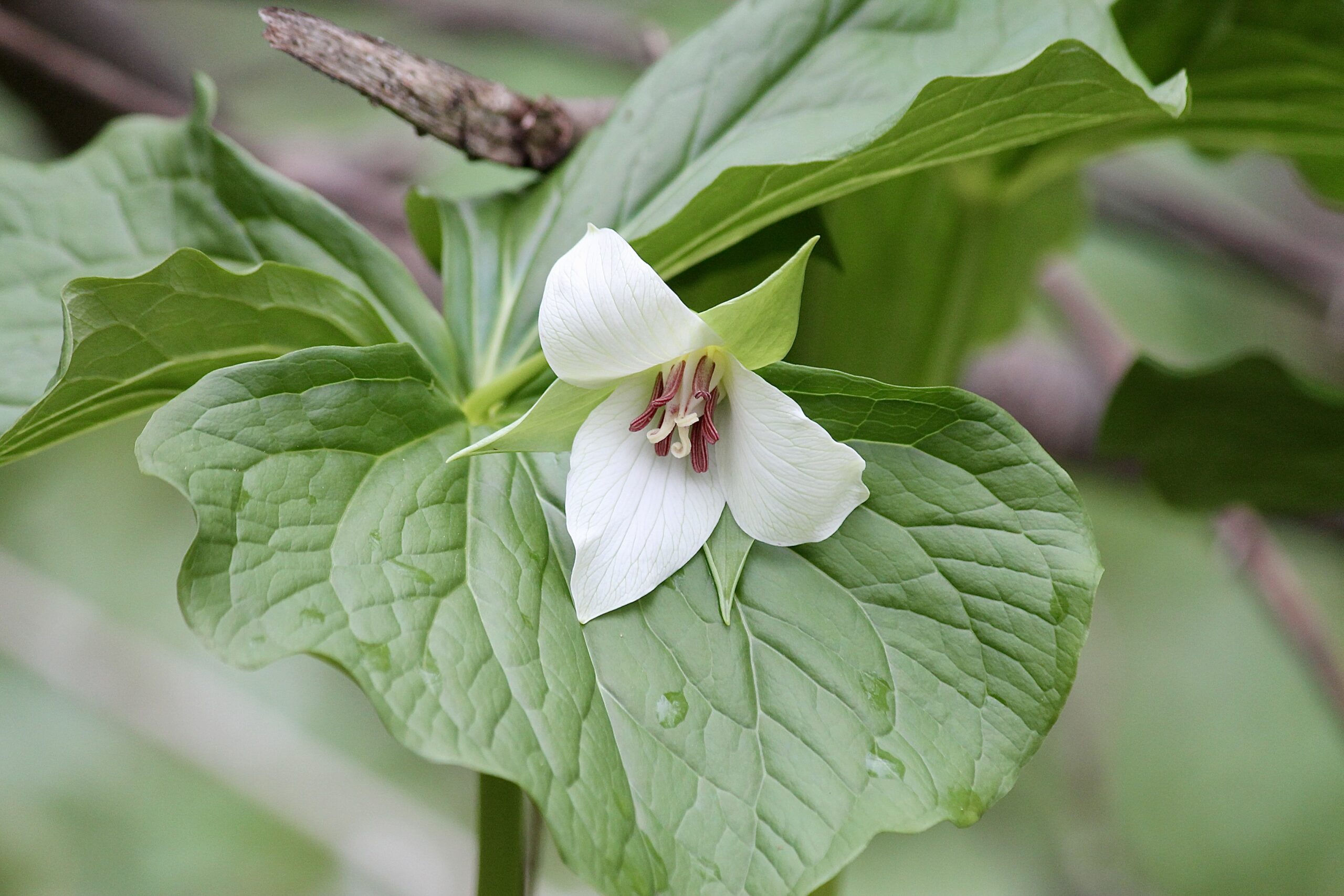

Farren is captivated by Trillium species, and always tries to add a new species to her list each year! This spring, she found red Trillium (Trillium erectum) tucked in a small hollow that was surrounded by developed land and had invasive species encroaching the area. It was both a joy and a heartache to find this site! Farren’s favorite species so far is great white Trillium (Trillium grandiflorum). The white to pink blooms are bold and impressive. She patiently awaits for the year that the collection she planted in her yard will bloom. In the meantime, Farren tries to visit the Blue Ridge Mountains each year to see populations of thousands upon thousands of great white Trillium.4
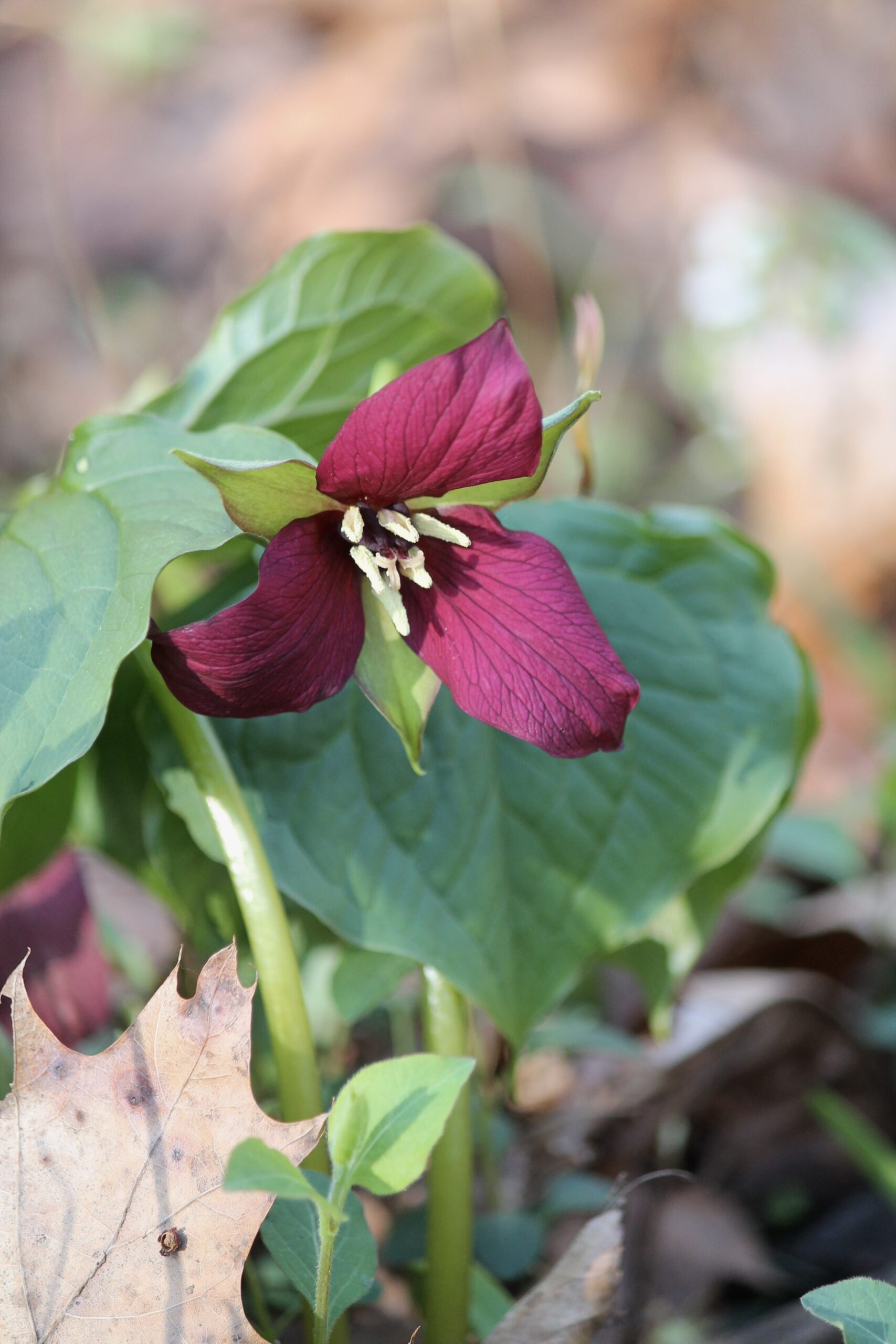
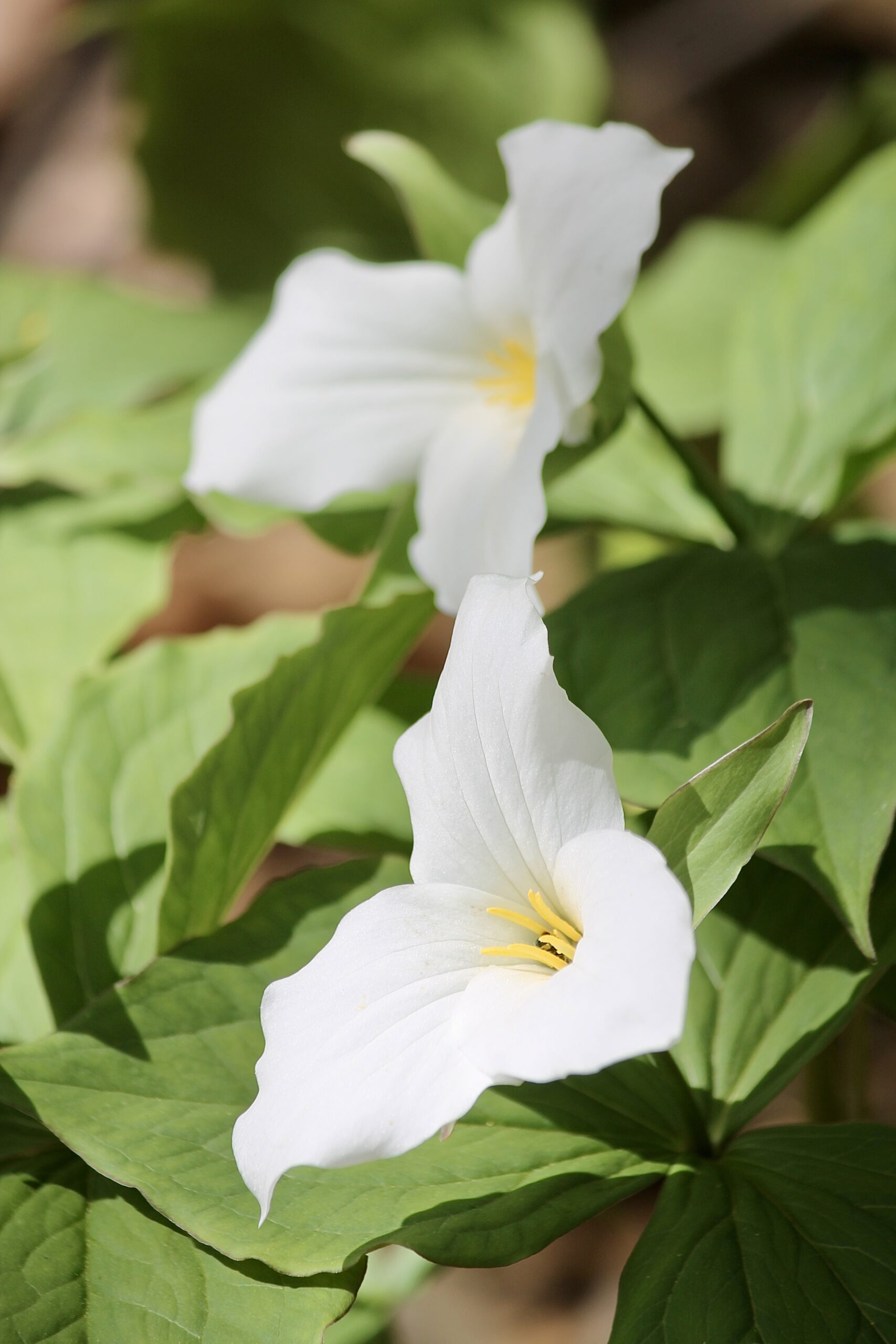
Dutchman’s breeches
What’s cuter than a miniature pair of upside pants (or breeches) hanging from the delicate stem of a woodland plant? Dutchman’s breeches (Dicentra cucullaria) are a spring ephemeral with a unique flower that resembles a pair of pants hanging upside down, which lends to part of its namesake. Dutchman’s breeches are a close relatives to the popular garden plant, bleeding hearts.5 If you compare the pink blossom of the bleeding hearts to the breeches, you will see the similarities in shape and structure! These plants are small, with fern-like leaves and a stem of blossoms that don’t grow taller than twelve inches off the ground.
The nectar that attracts pollinators to the Dutchman’s breeches is stored at the tip of the two elongated ‘pants’ at the top of the flower. This means insects with long tongues are the most efficient pollinators of this plant. Particularly, queen bumblebees (Bombus spp.) are known to pollinate Dutchman’s breeches in the early spring, busily harvesting to rebuild their colonies.6
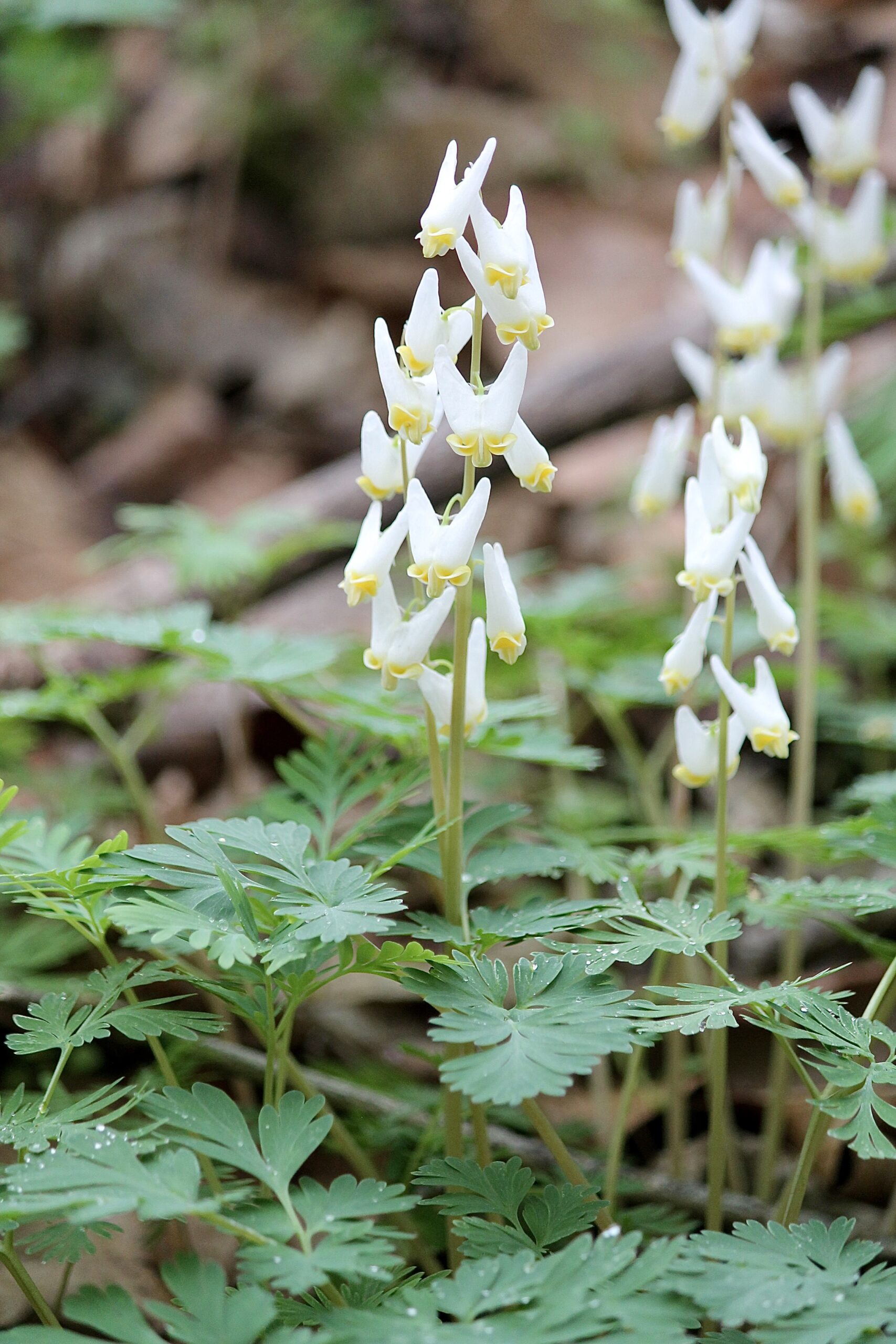
This plant is one of Shelby’s favorite spring finds! They are unique and intricate blooms, but easy to overlook with their small stature. She is delighted by the quirky breeches that add a bit of charm and animation to the forest floors. Shelby was very excited to see the carpet of breeches at Shenks Ferry Wildflower Preserve. They provided a beautiful frame for other spring ephemerals to emerge. With every step, the upside pantaloons of the Dutchman’s breeches led us on our wildflower hikes.
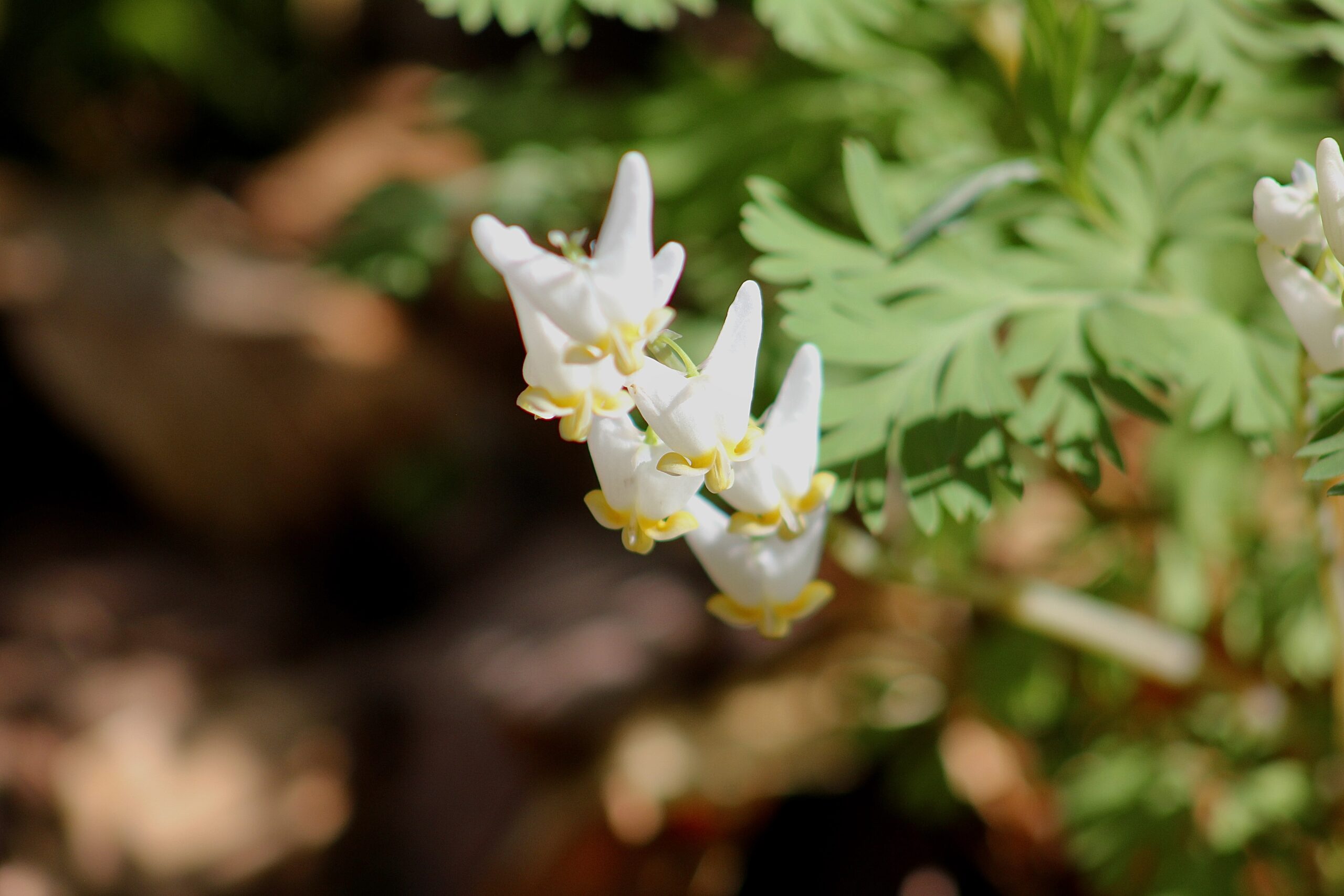

Animals on the Move
Along with plants, we came across a few animals enjoying the spring weather! Farren spotted a copperhead (Agkistrodon contortrix) basking in the sun on a rock outcrop. Copperheads are one of the venomous species of snakes in Pennsylvania, so we kept a respectful distance. Often misunderstood, snakes are fairly shy creatures that would rather make a quick exit than encounter a human in the wild. We were ssssssuper excited to see this beautiful snake!
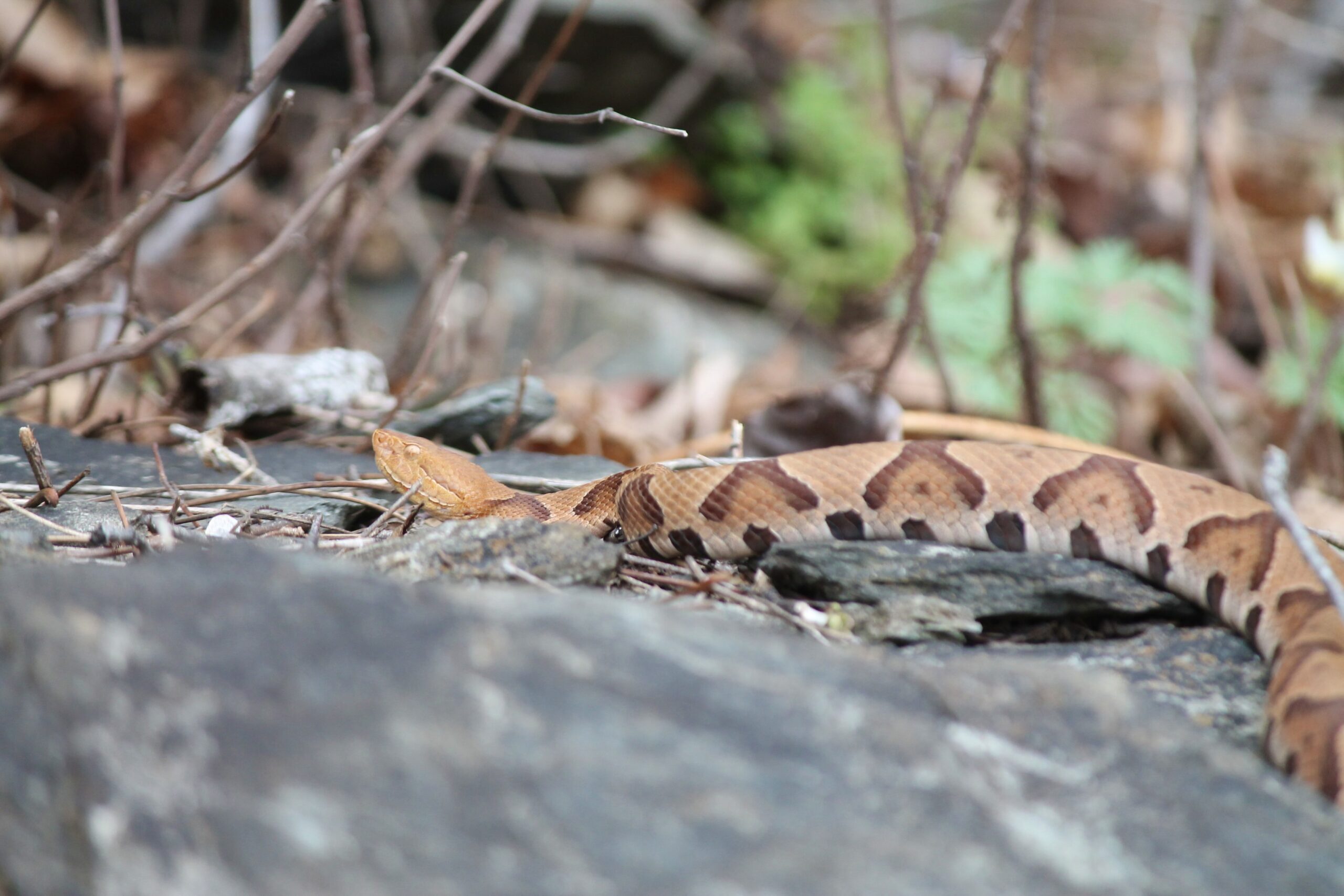
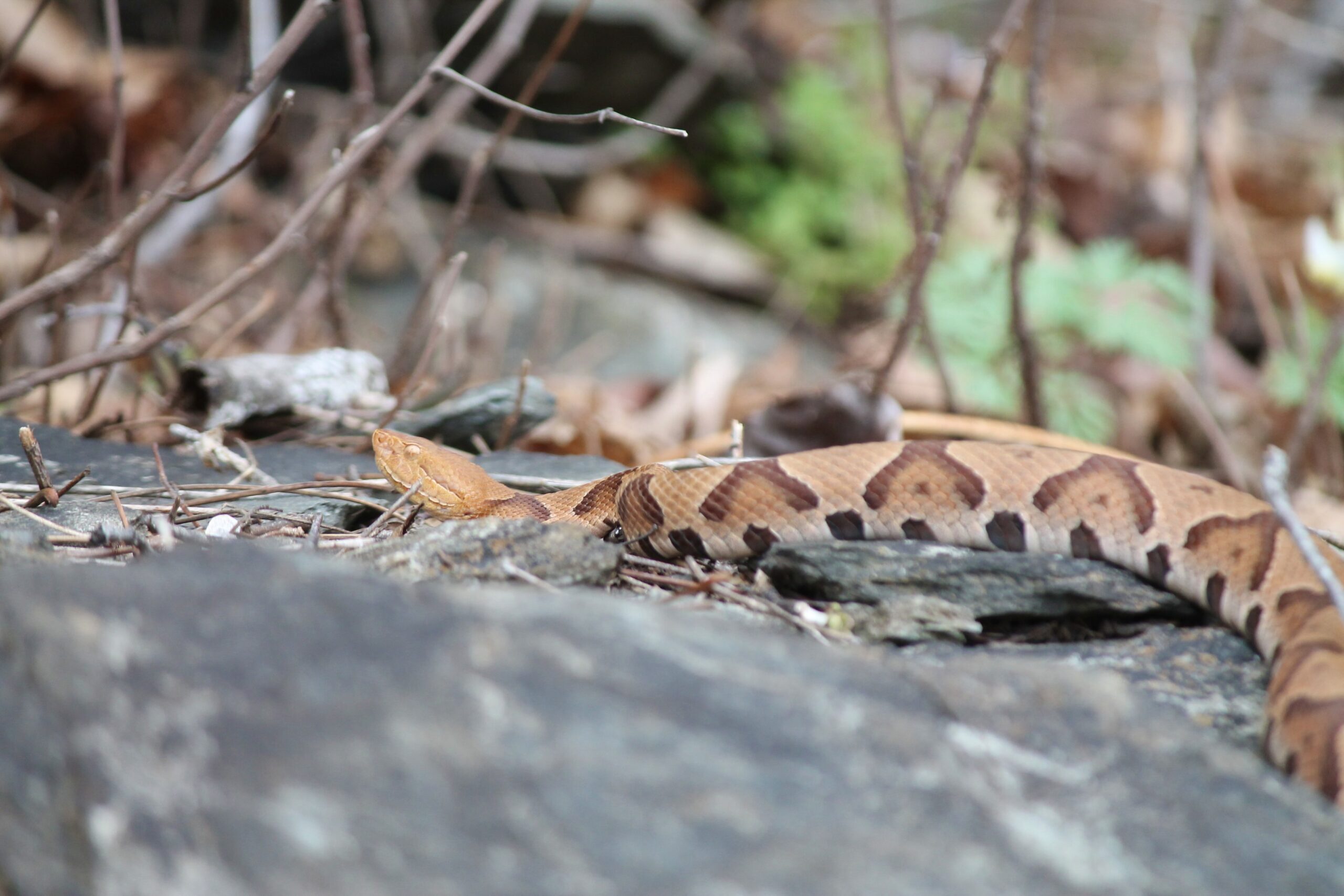
Thanks to Shelby’s keen eye, another reptile we encountered was an eastern box turtle (Terrapene carolina spp. carolina). This turtle was showing off its camouflaging skills as it hid amongst the leaves next to the trail! Although quiet and not so speedy, they have an effective defensive mechanism. When threatened, the turtles will draw their feet and head into their shell and close up as tight as they can like… you guessed it, a box! Box turtles will make the most of the mayapple (Podophyllum peltatum) fruit in June. If you see mayapples blooming on your property now, then keep a close eye out for box turtles this summer!


Enjoy and Protect
This spring was full of adventures! We are always seeking inspiration in nature and we are so grateful to be able to explore protected habitats. Throughout Pennsylvania, there are efforts to conserve incredible wildlands that include spring ephemeral sites. If you are interested in visiting and supporting conservation efforts, check out information from organizations like the Lancaster Conservancy, PA Game Commission, and the Central PA Conservancy.

We thank you for following along with Feather and Fern Wildscapes on this adventure! We’ll continue to use this blogspace to write about all things interesting and fun in the plant world. If you have questions about a certain plant or would like us to highlight a specific topic, comment below on any blog post and we’ll be sure to address it in a follow-up post! To keep up with us, sign up for our occasional newsletter and follow our social media channels as well – Instagram, Facebook, and LinkedIn.

1. Virginia Bluebells – CornellBotanicGardens [Internet]. cornellbotanicgardens.org. Available from: https://cornellbotanicgardens.org/plant/virginia-bluebells/
2. Trillium (Trillium, Trilliums, Wake-robin) | North Carolina Extension Gardener Plant Toolbox [Internet]. plants.ces.ncsu.edu. Available from: https://plants.ces.ncsu.edu/plants/trillium/
3. Trillium – Pittsburgh Botanic Garden [Internet]. Pittsburghbotanicgarden.org. 2023. Available from: https://pittsburghbotanicgarden.org/trillium/
4. Stritch L. Great White Trillium [Internet]. www.fs.usda.gov. Available from: https://www.fs.usda.gov/wildflowers/plant-of-the-week/trillium_grandiflorum.shtml
5. Dutchman’s Breeches | Dicentra cucullaria [Internet]. Wildadirondacks.org. 2018. Available from: https://wildadirondacks.org/adirondack-wildflowers-dutchmans-breeches-dicentra-cucullaria.html

